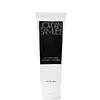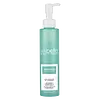What's inside
What's inside
 Key Ingredients
Key Ingredients

 Benefits
Benefits

 Concerns
Concerns

No concerns
 Ingredients Side-by-side
Ingredients Side-by-side

Caprylic/Capric Triglyceride
MaskingOlea Europaea Fruit Oil
MaskingGlycerin
HumectantWater
Skin ConditioningSucrose Laurate
EmollientCaprylhydroxamic Acid
Aloe Barbadensis Leaf Juice
Skin ConditioningCamellia Sinensis Leaf Extract
AntimicrobialAnthemis Nobilis Flower Extract
MaskingCalendula Officinalis Flower Extract
MaskingVitis Vinifera Seed Oil
EmollientSimmondsia Chinensis Seed Oil
EmollientTocopheryl Acetate
AntioxidantPropanediol
SolventCaprylyl Glycol
EmollientPhenoxyethanol
PreservativeCaprylic/Capric Triglyceride, Olea Europaea Fruit Oil, Glycerin, Water, Sucrose Laurate, Caprylhydroxamic Acid, Aloe Barbadensis Leaf Juice, Camellia Sinensis Leaf Extract, Anthemis Nobilis Flower Extract, Calendula Officinalis Flower Extract, Vitis Vinifera Seed Oil, Simmondsia Chinensis Seed Oil, Tocopheryl Acetate, Propanediol, Caprylyl Glycol, Phenoxyethanol
Ethylhexyl Palmitate
EmollientSorbeth-30 Tetraoleate
EmulsifyingVitis Vinifera Seed Oil
EmollientParfum
MaskingCaprylic/Capric Triglyceride
MaskingWater
Skin ConditioningPolyurethane-79
Carthamus Tinctorius Seed Oil
MaskingHelianthus Annuus Seed Oil
EmollientOlea Europaea Fruit Oil
MaskingGlycerin
HumectantPropanediol
SolventSodium Hyaluronate
HumectantChaenomeles Sinensis Fruit Extract
AntioxidantCinnamomum Cassia Bark
Skin ConditioningDiospyros Kaki Leaf Extract
Skin ProtectingArtemisia Princeps Leaf Extract
Skin ConditioningCamellia Sinensis Leaf Extract
AntimicrobialChrysanthellum Indicum Extract
Skin ConditioningLaminaria Saccharina Extract
Skin ProtectingLinalool
PerfumingLimonene
PerfumingHexyl Cinnamal
PerfumingBenzyl Benzoate
AntimicrobialEthylhexyl Palmitate, Sorbeth-30 Tetraoleate, Vitis Vinifera Seed Oil, Parfum, Caprylic/Capric Triglyceride, Water, Polyurethane-79, Carthamus Tinctorius Seed Oil, Helianthus Annuus Seed Oil, Olea Europaea Fruit Oil, Glycerin, Propanediol, Sodium Hyaluronate, Chaenomeles Sinensis Fruit Extract, Cinnamomum Cassia Bark, Diospyros Kaki Leaf Extract, Artemisia Princeps Leaf Extract, Camellia Sinensis Leaf Extract, Chrysanthellum Indicum Extract, Laminaria Saccharina Extract, Linalool, Limonene, Hexyl Cinnamal, Benzyl Benzoate
 Reviews
Reviews

Ingredients Explained
These ingredients are found in both products.
Ingredients higher up in an ingredient list are typically present in a larger amount.
Camellia Sinensis Leaf Extract is derived from the leaves of the tea plant. Black tea, green tea, and oolong tea are all harvested from this plant.
This ingredient has many skin benefits:
This ingredient contains polyphenols, a strong antioxidant. Antioxidants help fight off molecules that damage skin cells.
On top of that, the antioxidants in green tea neutralize free-radicals from the sun. This gives the skin some extra UV protection, but should not replace sunscreen.
Many components of tea have anti-inflammatory properties.
Polyphenols and L-theanine help soothe the skin and reduce irritation. The caffeine in Camellia Sinensis Leaf Extract helps calm inflamed blood vessels.
Other compounds found in tea include: Vitamin Bs, linoleic acid, magnesium, calcium, iron, and zinc.
Research has shown both drinking Camellia Sinensis Leaf Tea and applying it to the skin can help boost skin elasticity and hydration. Studies also show using tea extract may reduce sebum, or oil, production.
Learn more about Camellia Sinensis Leaf ExtractThis ingredient is an emollient, solvent, and texture enhancer. It is considered a skin-softener by helping the skin prevent moisture loss.
It helps thicken a product's formula and makes it easier to spread by dissolving clumping compounds.
Caprylic Triglyceride is made by combining glycerin with coconut oil, forming a clear liquid.
While there is an assumption Caprylic Triglyceride can clog pores due to it being derived from coconut oil, there is no research supporting this.
Learn more about Caprylic/Capric TriglycerideGlycerin is already naturally found in your skin. It helps moisturize and protect your skin.
A study from 2016 found glycerin to be more effective as a humectant than AHAs and hyaluronic acid.
As a humectant, it helps the skin stay hydrated by pulling moisture to your skin. The low molecular weight of glycerin allows it to pull moisture into the deeper layers of your skin.
Hydrated skin improves your skin barrier; Your skin barrier helps protect against irritants and bacteria.
Glycerin has also been found to have antimicrobial and antiviral properties. Due to these properties, glycerin is often used in wound and burn treatments.
In cosmetics, glycerin is usually derived from plants such as soybean or palm. However, it can also be sourced from animals, such as tallow or animal fat.
This ingredient is organic, colorless, odorless, and non-toxic.
Glycerin is the name for this ingredient in American English. British English uses Glycerol/Glycerine.
Learn more about GlycerinOlea Europaea Fruit Oil is the fixed oil obtained from the ripe fruit of the Olive. In other words - olive oil.
The primary contents of olive oil are glycerides of the fatty acids linoleic, oleic and palmitic.
Olive oil also contains antioxidants such as Vitamin E. Antioxidants may help reduce signs of aging by fighting unstable free-radical molecules. It also contains Vitamins A (retinol), D, and K.
The squalene in olive oil makes it a great emollient. Emollients help soothe and soften your skin by trapping moisture in. This makes olive oil a great skin moisturizer.
Studies show olive oil to have antibacterial and antifungal properties in low concentrations. Another study found olive oil irritated sensitive oily skin. We always recommend speaking with a professional about using this ingredient in your routine.
Due to the fatty acid content, this ingredient may not be fungal-acne safe.
Learn more about Olea Europaea Fruit OilPropanediol is an all-star ingredient. It softens, hydrates, and smooths the skin.
It’s often used to:
Propanediol is not likely to cause sensitivity and considered safe to use. It is derived from corn or petroleum with a clear color and no scent.
Learn more about PropanediolVitis Vinifera Seed Oil comes from the grape vine. Grape seeds are a byproduct of creating grape juice or wine.
The components of grape seeds have many skin benefits. Research has found it to be antimicrobial and anti-inflammatory. It also contains many potent antioxidants such as Vitamin E , Vitamin C, proanthocyanidins, polyphenols, flavonoids, and anthocyanins. Proanthocyanidin has been shown to help even out skin tone.
Antioxidants help fight free-radical molecules. Free-radical molecules are capable of damaging our cells and other genetic material. Antioxidants help stabilize free-radicals by donating extra electrons. Grape seed extract may help reduce the signs of aging.
The antimicrobial properties of grape seed may help treat acne. However, more research is needed to support this claim.
Grape seed has also been found to help absorb UV rays. Grape seed extract should not replace your sunscreen.
The fatty acids of grape seed oil give it emollient properties. Emollients help soothe and soften your skin by creating a film. This film traps moisture within, keeping your skin hydrated.
Learn more about Vitis Vinifera Seed OilWater. It's the most common cosmetic ingredient of all. You'll usually see it at the top of ingredient lists, meaning that it makes up the largest part of the product.
So why is it so popular? Water most often acts as a solvent - this means that it helps dissolve other ingredients into the formulation.
You'll also recognize water as that liquid we all need to stay alive. If you see this, drink a glass of water. Stay hydrated!
Learn more about Water